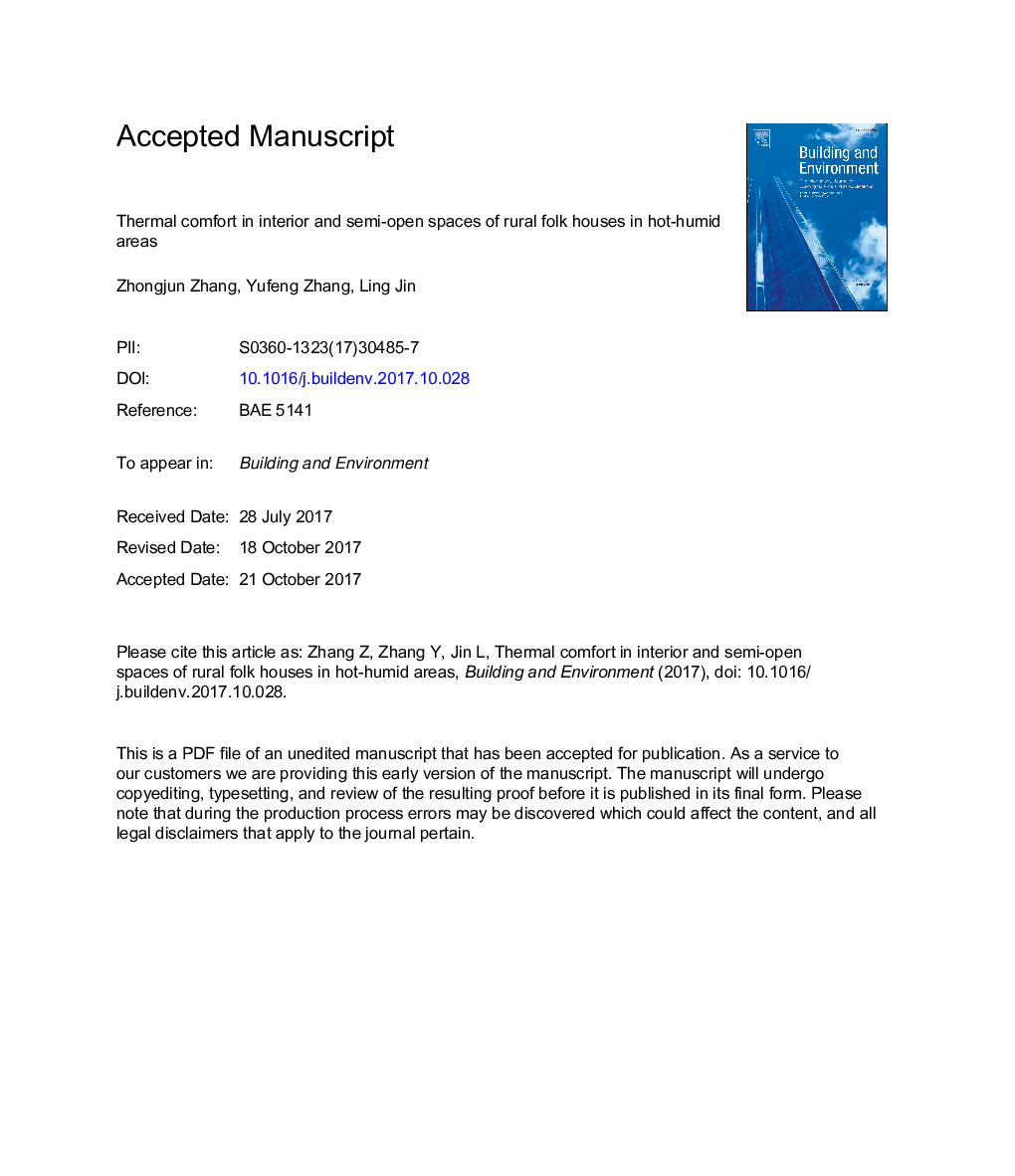| Article ID | Journal | Published Year | Pages | File Type |
|---|---|---|---|---|
| 6698397 | Building and Environment | 2018 | 24 Pages |
Abstract
Semi-open spaces are a key element in the climate adaptive design of rural folk houses and are important places where rural residents perform daily activities in hot-humid areas. In this study, a year-long thermal comfort field survey was conducted in rural folk houses in 11 rural areas in the Guangdong Province, the hot-humid area of southern China. The subjective responses of residents were recorded via questionnaires, and all ambient environment parameters were measured. The results show that air speed was greater and relative humidity was lower in the semi-open spaces. The clothing insulation of the survey respondents varied with indoor operative temperatures from 0.27 clo to 1.2 clo during the non-summer season and remained steady at 0.30 clo during the summer season. The thermal neutral, acceptable and preferred indoor operative temperatures were determined for the interior and semi-open spaces in the summer and non-summer. Compared to those of the interior spaces, the thermal neutral temperature was 0.6-1.3 °C lower and the upper limit of 80% acceptable temperature was decreased by 0.8-4.7 °C in the semi-open spaces. The acceptable temperature in the summer for the rural residents was found to be 0.2-1 °C higher than that of the urban residents in the same climate. Psychological factors such as local culture, expectations and perceived control might be the reasons for these differences. This study contributes to a better understanding of the thermal comfort of rural people and to the improvement of rural living conditions.
Related Topics
Physical Sciences and Engineering
Energy
Renewable Energy, Sustainability and the Environment
Authors
Zhongjun Zhang, Yufeng Zhang, Ling Jin,
